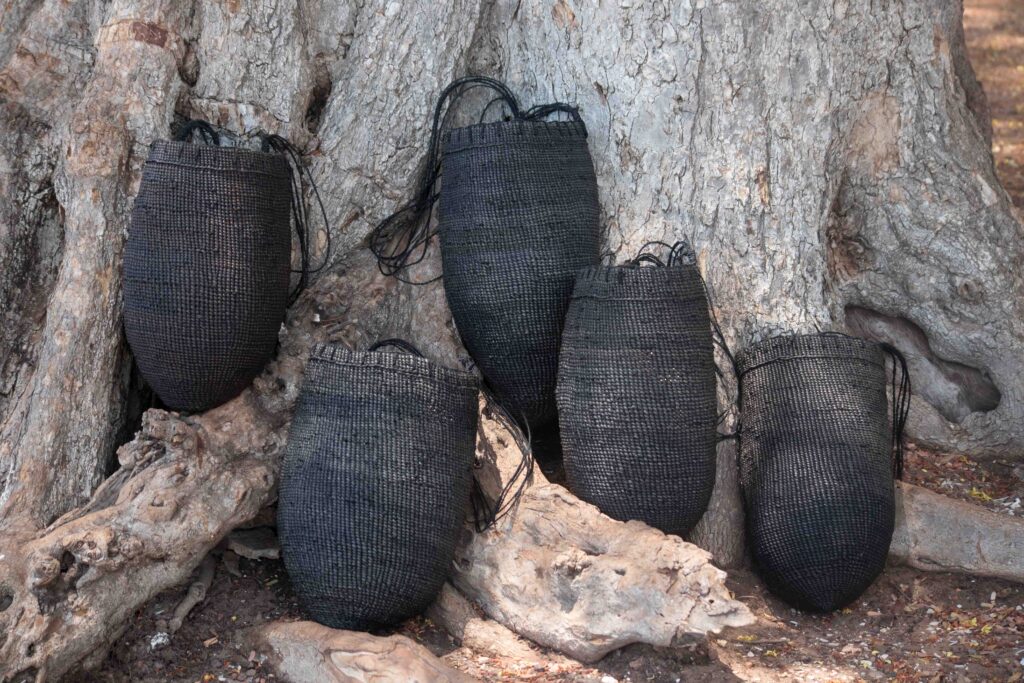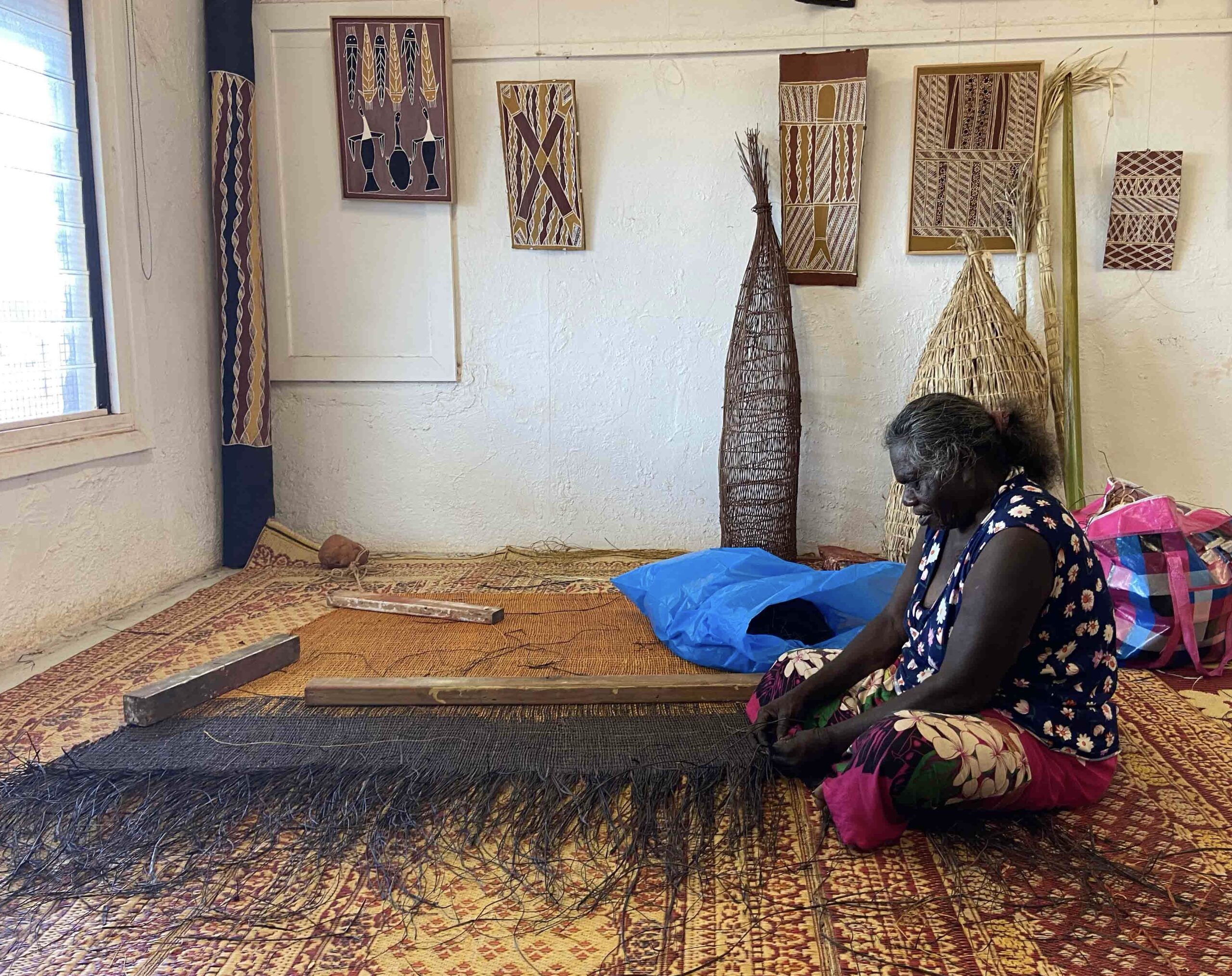Margaret Rarru Garrawurra was born in Galiwin’ku (Elcho Island). Today she lives on her mother’s country of Laŋarra (Howard Island) and at Yurrwi (Milingimbi Island), both off the coast of Arnhem Land. In the unhurried environment of Laŋarra homeland, Rarru gathers materials and processes them into artworks, imbued with their ancestral origins and Rarru’s drive to create new distinct forms.
Rarru is a senior artist and master weaver at Milingimbi Art and Culture, and a respected elder amongst the community. Rarru speaks little English, however she engages with the Balanda (European) world through her art practice, becoming well known for her ‘Madonna Bra’ bathi (baskets) and wearable pieces as well as her minimalist forms including Mindirr Mol (black conical baskets).
Whilst the technique of immersion dyeing has been widely practiced in Arnhem Land since the arrival of missionaries, the recipe for creating black dye from local plants was developed later and refined by Rarru. Yolŋu weavers respect her as the owner of mol (black) and whilst they may know the recipe and occasionally use small amounts of it, the use of mol alone in a work is reserved for Rarru and those to whom she gives permission.
As a young girl Rarru showed an aptitude for weaving and was thus taught the techniques and cultural significance of making ceremonial and functional objects. Developing her craft throughout her life, she has been at the forefront of a generation of artists who have revealed the ingenuity of Yolŋu fibre artists and contributed greatly to the wider appreciation of fibre work as a contemporary art forms.
Rarru’s art practice also includes painting with ochre on bark and ceremonial poles. In 2007 she won the National Aboriginal and Torres Strait Islander Art Award bark painting category for her work Ŋarra Body Paint Design. This is a subtle piece of vertical triangles and circular motifs that represent her homeland of Garriyak, sacred waterholes and the journey of the ancestral Djan’kawu Sisters.
Rarru’s artwork has been acquired by many galleries and museums, including the Museum der Kulturen in Switzerland. She features prominently in the collections of the Queensland Art Gallery and Gallery of Modern Art, the National Gallery of Victoria and the Art Gallery of South Australia.
Birth
29/01/1940
Clan
Liyagawumirr – Garrawurra
Language group
Dhuwal
Homeland
Garriyak

